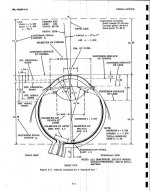While I have not heard from Swarovski, I am struggling to get a book out and I must put this thing behind me for now. Lee has an “in” with the big Z and has sent me the following memo:
Hi Bill
just received response from my pal at Zeiss who replies that all their collimators are supplied by their engineering dept and checked by the quality assurance dept but he is not allowed to share drawings or manuals.
However I think Gary's response tells you what you want to know about Zeiss and Leica even if it doesn't explain why some other places don't use 3 axis method.
Like Lee, I have long-trusted Gary and I found his comments valuable. I thought I had made my reasons for wondering amply clear and that I was just QUESTIONING but never ACCUSING. And I stated that I knew, empirically, 3-axis collimation was being carried out as late as September 2008.
Thus, the idea that the Big Three might be taking shortcuts based on hammered sales or new scientific data regarding spatial accommodation in the collimation process, has been taken off the table as well as having been taken WAY out of context.
If I might be so bold as to offer another query—which I think I have a right to—it would be in wondering why I was eager to show my customers my collimators and process and some Asian firms show row after row of techs sitting at Fujinon U.B.M.M.s, while others are so secretive about their equipment and process. Is that not a logical question to ask?
One possible reason is that they have developed some PROPRIETARY equipment or techniques that they feel it important to keep from the competition.
— I know for a FACT that some prominent American binocular importers and individual techs are unfamiliar with spatial accommodation and 3-axis collimation and call their unscientific, sometimes damaging, willy-nilly alignment process, “collimation.” In addition, I don’t think the average European alignment technician has any more knowledge of the subject than our guys. (Please ask Cory Suddarth of Suddarth Optical Repair,
https://suddarthoptical.com/)
— I know for a FACT that 100% of the collimation tips CURRENTLY found on the Internet deal only with conditional alignment and not clinical collimation—although novice alignment techs ubiquitously refer to it as such.
— I know for a FACT that until I explained the difference between collimation and conditional alignment to the optical engineers of SPIE and the UA’s College of Optical Sciences in 2012, they were unaware of the importance. It was NOT a matter of ignorance or indifference. It was just something that was out of the realm of their training and everyday thinking. At that level of understanding, knowledge of Optics and Mechanics diverge, with collimation falling under the umbrella of Mechanics.
I have always been eager, for the benefit of the science, to fall on my sword when PROVEN wrong. I have also been resolute in standing my ground when needlessly challenged by those lacking some portion of facts and motivations. :cat:







